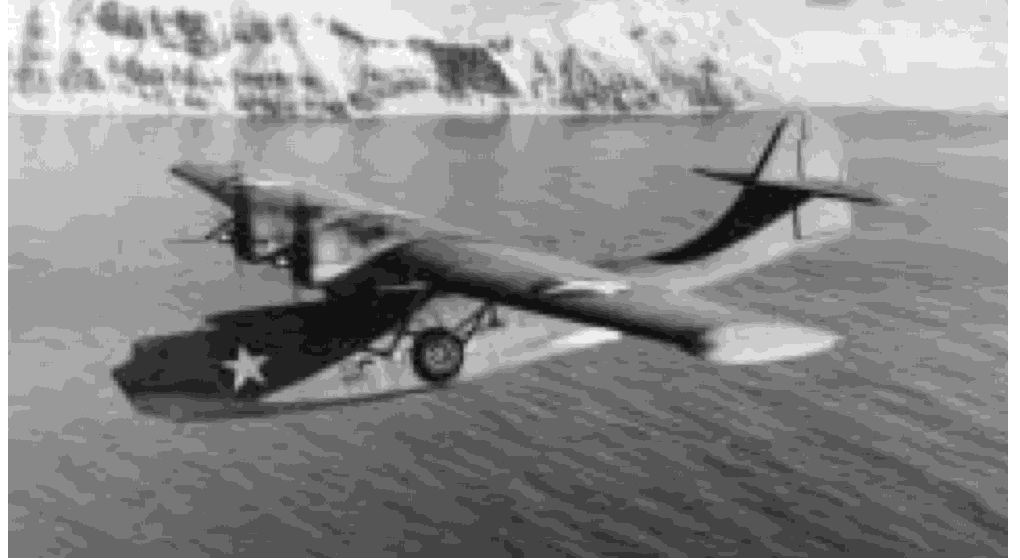
120
UNITED STATES NAVAL AVIATION
1910-1995
1942-Contin ued
Squadron 223 and Scout Bombing Squadron 232,
delivered by the escort carrier
Long Island,
initiated
operations from Henderson Field on Guadalcanal (20
Aug) and were joined within a week by AAF fighter
elements and dive bombers from
Enterprise,
and by
other elements as the campaign progressed. Until the
island was secure (9 Feb), these forces flew intercep-
tor patrols, offensive missions against shipping, and
close air support for the Marines and for Army troops
relieving them (13 Oct). Marine air units carrying the
major air support burden accounted for 427 enemy
aircraft during the campaign.
10 August
The headquarters of Patrol Wing 3 shift-
ed within the Canal Zone from NAS Coco Solo to
Albrook Field for closer coordination with the Army
Air Force Command in the defense of the Panama
Canal.
12 August
Cleveland
(CL 55), operating in the
Chesapeake Bay, demonstrated effectiveness of the
radio-proximity fuze against aircraft by destroying
three radio-controlled drones with four proximity
bursts fired from her five inch guns. This successful
demonstration led to mass production of the fuze.
12 August
Wolverine
(IX 64) was commissioned at
Buffalo, N.Y, Commander George R. Fairlamb com-
manding. This ship and
Sable
(IX 81), commissioned
the following May, were Great Lakes excursion ships
converted for aviation training and as such they oper-
ated for the remainder of the war on the inland waters
of Lake Michigan. They provided flight decks upon
which hundreds of Student Naval Aviators qualified for
carrier landings and many flight deck crews received
their first practical experience in handling aircraft
aboard ship.
13 August
Commander-in-Chief, U.S. Fleet directed
that an Aircraft Experimental and Developmental
Squadron be established about 30 September 1942 at
NAS Anacostia, D.C. This squadron, which replaced
the Fleet Air Tactical Unit, was to conduct experiments
with new aircraft and equipment in order to determine
their practical application and tactical employment.
15 August
Patrol Wing 11 was established at
Norfolk, Va., Commander Stanley 1. Michael com-
manding. Five days later the Wing moved to San Juan,
P.R., for operations under the Caribbean Sea Frontier.
20 August
The designation of escort carriers was
changed from AVG to ACV.
24 August
Santee,
Captain William D. Sample com-
manding, was placed in commission at the Norfolk
Navy Yard, Va.; the first of four escort carriers of the
Sangamon Class converted from Cimarron Class fleet
oilers.
30 August
The occupation of Adak, Alaska, by
Army forces and the establishment of an advanced
seaplane base there by the tender
Teal,
put North
Pacific forces within 250 miles of occupied Kiska and
in a position to maintain a close watch over enemy
A PBY Catalina f7ying over the Aleutians near Adak 405443
shipping lanes to that island and to Attu, Aleutian
Islands. The tender
Casco,
conducting support opera-
tions from Nazan Bay, was damaged by a submarine
torpedo and temporarily beached.
1 September
U.S. Naval Air Forces, Pacific, Rear
Admiral Aubrey W. Fitch commanding, was estab-
lished for the administrative control of all air and air
service units under the Commander-in-Chief, Pacific
(CINCPAC), replacing the offices of Commander,
Carriers Pacific, and Commander, Patrol Wings Pacific.
The subordinate commands Fleet Air West Coast, Fleet
Air Seattle, and Fleet Air Alameda were established at
the same time.
6 September
The first Naval Air Transport Service
flight to Argentia, Newfoundland, marked the begin-
ning of air transport expansion along the eastern
seaboard that during the month extended briefly to
Iceland and reached southward to the Canal Zone and
Rio de Janeiro, Brazil.
7 September
Air Transport Squadron 2, based at
Alameda, Calif., established a detachment at Pearl
Harbor, Hawaii, and began a survey flight to the South
Pacific as a preliminary to establishing routes between
San Francisco, Calif., and Brisbane, Australia.
 |
20 |
 |